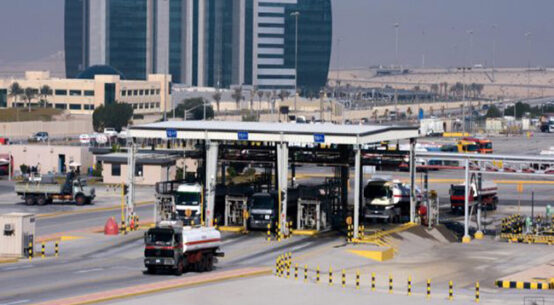
As India’s 968.8 million voters were gripped by election fever, the worst-ever heat wave held the country in its clutches.
The Indian capital, New Delhi, recorded the country’s highest ever temperature of 52.9 degrees Celsius (127.22 °F) on May 28. More than 50 people died within a week due to heat stroke across the country. However, ironically, despite climate change and the havoc it is unleashing upon the country’s inhabitants, there was scant mention of it in the manifestos of the 744 political parties contesting the elections.
India and the Heat Wave
The year 2022 was called the hottest summer ever. That year, it was so hot in India that it broke the 122-year-old record. But then came 2023, when the summer season was so scorching hot that scientists said it was the hottest summer in the last 2,000 years in the northern hemisphere. But then came the year 2024. From January to June, all months were recorded as the hottest months ever. In the Indian state of Uttarakhand, there were forest fires. In the first week of May, forest fires were seen in states like Odisha, Chhattisgarh, Madhya Pradesh, and Jharkhand. Heat wave warnings are being issued all over the country, even in places like the southern Indian state of Kerala, where, until recently, heat waves were seldom recorded.
The pervasive heat waves are putting the country’s poor in dire straits. Roadside laborers are dying, and thousands of acres of crops are withering in the heat, affecting millions of people in India’s agriculture sector.
What is a heat wave?
The Indian Meteorological Department will announce a heat wave warning if the temperature on the plains is above 40°C, above 37°C in the coastal areas, and above 30°C in the mountains, or if, for two consecutive days, the temperature is 4.5°C above normal. And if it is 6.4°C above normal for two consecutive days, it is considered a severe heat wave. And if the temperature exceeds 45°C without checking any other conditions, a heat wave is declared.
But, in many cases, the Indian Meteorological Department issues a heat index warning rather than just talking about the temperature.
What is a heat index?
Humidity impacts how heat is experienced. So if two places have a temperature of 45°C, but one is more humid, it feels hotter. This is because the moisture in the air means that sweat on the skin doesn’t evaporate as easily.
In places like the southern Indian city of Chennai, humidity is much higher compared to Delhi. So people feel hotter in Chennai due to the humidity, even when the temperature is lower. To measure this, there is a heat index that indicates how hot it feels, rather than just measuring temperature. These extreme temperatures are killing people because its difficult to cool their bodies down.
‘We will all go insane before dying’
According to a report from March 2023, non-communicable diseases were responsible for 1 out of every 4 deaths in India, all because of the heat. In Delhi alone, heat was responsible for 11 percent of deaths.
Prashant Tripathi, known as Acharya Prashant, an Indian philosopher and author, says the situation in India has reached a point where there is a threat of mass insanity looming in the country. Prashant claims that poor people will be the most severely impacted by climate change and that before they pass away, they will go insane, wander around in dry clothes, and attack one another. “This is a very serious matter. You see, when a person is suffering from a high fever, he blabs nonsensical things. The same could be the situation for heat waves. You will see an epidemic of mass insanity happening in the country. We will first go insane and then die—one by one,” he said.
According to him, the political parties have become so consumed with the race to win power that they do not even give a damn about these crucial issues.
Climate change and India’s electoral landscape
While going through the poll manifestos of India’s major political parties, climate change finds the minutest mention. While the ruling Bharatiya Janata Party (BJP) highlights the importance of fossil fuel reduction for electricity generation, it pledges to work towards achieving net-zero emissions by 2070. The main opposition party, Indian National Congress, claims in its manifesto that it will address the issues of environment and climate change with the seriousness they deserve. The Communist Party of India pledged the promotion of renewable energy, such as solar and wind, if voted to power. Other than this, climate change finds no mention in the massive public rallies that were held across the country during the poll campaign.
Amir Kareem, a research scholar of political science from the University of Kashmir, told IPS that society is so taken up with communal controversies, as issues such as religious diversity and ethnicity are termed in India, that there is little time to look at the real big issue—climate change.
“The Indian political system is still reeling under the crises of providing good roads, free electricity, and jobs. Climate change is not a priority. The main reason is a lack of education and awareness. We are not making our people aware that it is the land, the soil, and the air that are providing us everything. There is crazy stuff of communal hatred, allegations, and counter-allegations, dominating the scene,” Kareem said.
Meanwhile, the million-dollar question remains: Why is the Indian political system playing a proverbial ostrich about the climate change the country is already engulfed in? Only time will tell what price the country will pay for such neglect. As the results pour in, will voters regret not asking heated questions about the climate?
This feature is published with the support of Open Society Foundations.
Umar Manzoor Shah is a correspondent of Inter Press Service (IPS)


